FIELD TEST:
THE NOH CT-20 ALT-AZ MOUNT
By: William A. Paolini, August 9, 2021

Fig 1: Close up of the NoH CT-20 Alt-Az (Altitude-Azimuth) mount configured witha Vixen-style saddle.
Image Credit: Author
1. OVERVIEW
[NOTE - THIS PRODUCT EVALUATION WAS CONDUCTED IN 2021].
The NoH CT-20 Alt-Az (altitude-Azimuth) mount is a product offering that is designed, manufactured, and sold by Mr. Noh in South Korea. The manufacturer's website is www.nohsmount.com. The mount is currently hand-manufactured and offered under the product name of NoH's CT-20 Mount. The marketing literature for this astronomical mount lists the following as some of its features and specifications:.png)
Fig 2: Vendor supplied specifications (as of 2021).
A complete list of features and purchasing information is available from the manufacturer at www.nohsmount.com (jeong@nohsmount.com).
Note - please address any questions or comments relative to this review directly with the author at wapaolini@hotmail.com.
2. PRODUCT INSPECTION AND IMPRESSIONS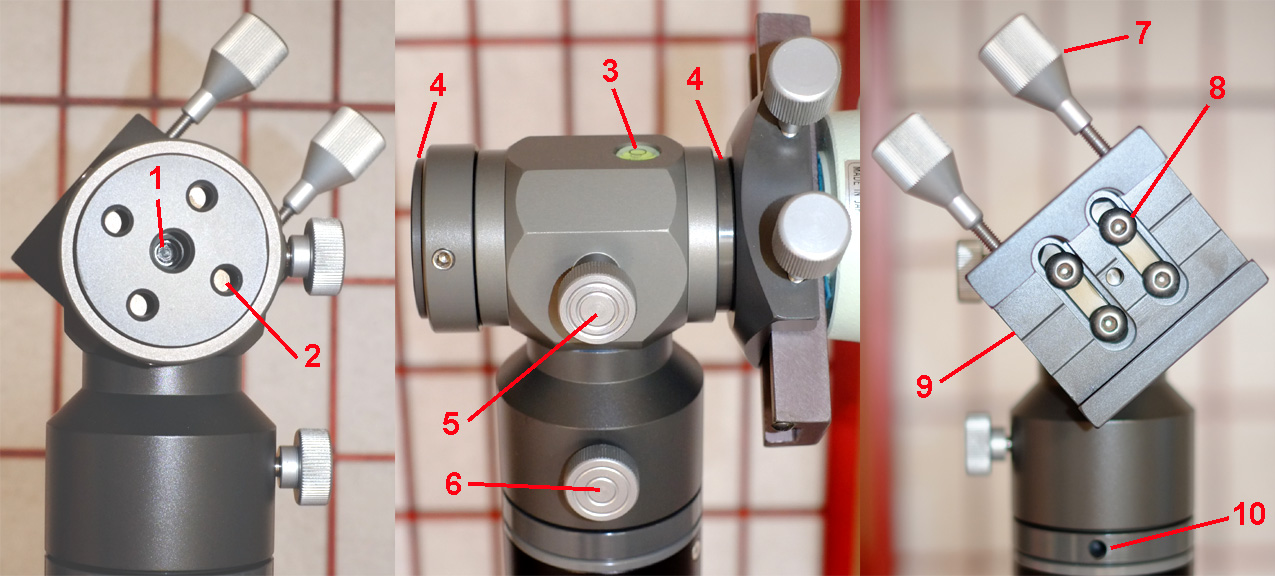
Fig 3: Multiple views of the NoH CT-20 Alt-Az mount head. Image Credit: Author.
1) Locking screw for the left altitude-axis accessory mounting plate
2) Threaded holes used to mount dovetail saddle onto the left altitude-axis accessory plate
3) Bubble level
4) Left and right altitude-axis accessory mounting plates
5) Altitude-axis friction knob
6) Azimuth-axis friction knob
7) Saddle locking knobs to secure the telescope's dovetail plate to the mount
8) Screws to secure the dovetail saddle accessory to the right altitude-axis accessory plate
9) Vixen dovetail saddle accessory
10) Utility hole for leverage when tightening and loosening the mount head from the pier or tripod
The Altitude-Azimuth type of mount is my personal favorite for visual astronomical observing. I prefer this design because they tend to be lighter than other mount types since they generally do not require counterweights like equatorial mounts, eyepiece orientation stays consistent through the complete range of motion with no need to rotate the focuser, no need for polar alignment, and most importantly pointing the telescope toward a celestial object is completely natural and intuitive. Another plus for me is that Alt-Az mounts often come without any electronics for finding celestial objects nor motors for automated tracking which meansfor me that there is no need to bother with batteries or chords forelectricity asI like keeping my observing as uncomplicated as possible.Altitude-Azimuthmounts are also in my experience the fastest mounting tosetup with nothing todo other than place the mount on the ground, attach thetelescope, and startobserving.So for me, they are the optimum mount wherethe equipment never getsin the wayof the observing so that vast majority ofmy focus can be on the skywhich iswhereI want it to be. The NoH CT-20 mountI received for thisevaluation was a completely manual version of this mounttype. However,according to the manufacturer they will soon be offeringencoder capability forthose that enjoy automated object location and do notmind the extra burden ofneeding power sources and interface displays.
Fig 4: Dimensional measurements of the NoH CT-20 Alt-Az mount head.
Image Credit: Author.
Overall, upon unpacking the CT-20 mount looked and felt extremely well built. Fit and finish on all visible components was excellent. The girth and weight of the mount further conveyed the impression that it was very solid and capable. Note that my CG-5 tripod, which does not use a 3/8" bolt, already had the factory center screw removed and replaced with the more standard 3/8" threaded bolt as I have other mount heads that use the 3/8" attachment standard. Therefore, adding the optional NoH 7" Extension Pier to my Celestron CG-5 tripod was quick and easy as all I needed to do was to screw the component onto the tripod base's bolt by hand. Attaching the CT-20 Mount head to the extension pier was easy as well and simply required that I rotate the mount head onto the 3/8" threaded bolt coming out of the top of the 7" Extension Pier. To tighten the mount head firmly to the extension pier, the CT-20 has a smooth bore hole near its base (see annotation #10 in Figure 3), so I inserted an appropriately sized metal rod into the hole, I used an Allen wrench, and used that for leverage to firmly secure the mount head to the pier. Once this was completed the mount was ready for observing in the field as the Vixen-style saddle was already attached to one side of the mount head when I unpacked the mount.
With the mount now fully ready to go, I first did some daytime observing to become familiar with its operation. I first attached my TSA-102 telescope to the mount (approx. 15 lbs without eyepieces). With the CT-20's altitude-axis and azimuth-axis friction knobs engaged tightly to keep the saddle from moving (see annotation #5 & #6 in Figure 3), and the saddle locking knobs fully loosened so no longer protruding into the saddle's dovetail plate holder (see annotation #7 & #9 in Figure 3), I slid my TSA-102 with plate attachedinto the CT-20's saddle and tightened the locking knobs. I found the length,width, and engraved grip lines of the saddle knobs more than adequate to get avery firm lock onto the Vixen plate. Note that the altitude and azimuth-axis friction knobs, as well as the saddle locking knobs, are not captive so if you unscrew them too far they will become removed from the mount and I have found this consistent with my other alt-az mounts.
With the TSA-102 now securely attached to the mount, I loosened the altitude-axis and azimuth-axis friction knobs as well as the Takahashi clamshell knobs to loosen the telescope in its holder, and slid the TSA-102 tube in its clamshell so that it was neutrally balanced on the mount. I then tightened the telescope Takahashi clamshell knobs so the telescope was secure in its holder and began to examine the movement of the CT-20 on both of its axes. With the axes friction knobs loosened the movement of the telescope around both axes was free and smooth. I then added a little tension to boththe altitude and azimuth-axis knobs and the movement of the telescope on eachaxis now required some force to overcome the resistance I dialed in. Themovement under tension remained smooth and silky as I rotated the scope fullyon round both axes. I then added a 40mm XW eyepiece to the telescope so thatthe altitude-axis was now out-of-balance by a little more than 1.5 pounds (0.7kg) on the focuser side of the telescope, and strongly tightened thealtitude-axis friction knob so the telescope would hold steady even thoughsignificantly out of balance. In this severe out-of-balance condition themovement of the telescope was still nicely smooth, although additional forcewas needed as expected to move the scope with the altitude-axis friction knobset so tightly. Overall the performance of the mount seemed excellent in thisfamiliarization test using the TSA-102.
I next repeated the same familiarization test using the much heavier and larger APM-152 (approx. 26+ pounds or 11.8+ kilograms without eyepieces). With the APM-152 now attached to the CT-20 mount, testing it both in a balanced and unbalanced state on the mount like with the TSA-102, I found the movement of the mount in both the altitude and azimuth directions remained smooth andfirm. The only point of note was that with the scope in a strongout-of-balancestate, I found I was wishing the altitude-axis friction knobwas a littlelarger so it was easier to tighten. I felt the knob was not aseasy as I wouldhave liked to grip and strongly tighten due to its relativelysmall 1-inchdiameter. I was still however able to adequately secure the axisturning theknob with my bare hand so the scope stayed in position even thoughfar out ofbalance. Note - I relayed this small point to the manufacturer andthey statedthat they would address it with an improvement in a futurerelease.
3. FIELD TEST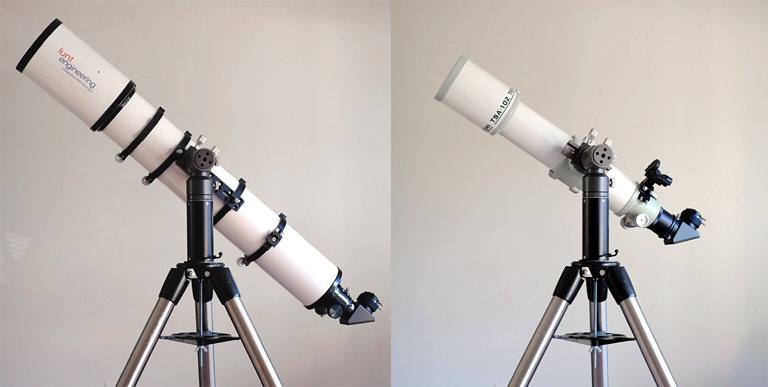
Fig 5: APM/Lunt-152 f/8 ED-Apochromat (left)and TSA-102 f/8 Super Apochromat (right) telescopes with the
NoH CT-20 mounthead and 7" Extension Pier on a Celestron GC-5 Tripod used for mount performancetesting. Image Credit: Author.
LOCATION
Field testing was conducted under the heavily light polluted skies of Vienna, Virginia (Red Zone), which is located approximately 15 miles west of Washington, D.C. Outdoor temperatures during field testing typically ranged between 60-75°F (15.5-23.9°C) with humidity averaging 40-60%. Elevation of the observing site is approximately 360 feet (110 meters) above sea level. Telescope setup was on a mowed grass covered field.
PROCESS
Due to the nature of this test (i.e., stability and smoothness of a mount's operations), celestial object selection was not deemed critical to the testing. Therefore, a selection of stars, double stars, and the Moon were used for the tests. Mount stability tests were conducted with both nighttime celestial observing as well as daytime terrestrial observing. Motion and tracking tests were conducted only with nighttime celestial observing.
For the out-of-balance tests each telescope was balanced in the mount with the very light 1.25" 8mm RKE (approx. 2.2 oz or 62 grams), then not re-balanced when the 2" 40mm XW was used (approx 24.7 oz). This meant the telescope was out-of-balance by at least 1.4 pounds (22.5 oz or 638 grams) and heavier at the eyepiece end of the telescope. The process was also reversed balancing the scope with the heavier 40XW and not rebalancing when the 8mm RKE was used, so the telescope was then lighter at the eyepiece end by the same 1.4 pounds(22.5 oz or 638 grams). Various other less radical out-of-balance situationswerealso modeled using magnifications up to 600x in the APM-152 and up to410x inthe TSA-102.
Recovery tests were also conducted to determine settle time when the telescope was jarred or hit. These were done by locking the telescope on target at highest magnifications, 600x in the APM-152 and 410x in the TSA-102, then hitting the diagonal with my hand with moderate force. A stop watch was used to measure the time for the view through the eyepiece to settle back to fully stable. Note that these tests were conducted using a steel legged tripod which can accentuate vibrations and without any vibration suppression pads under the tripod.
Smoothness of operation tests were conducted with the telescopes in both in-balance and out-of-balance conditions, locating and tracking various stars and double stars as well as various features on the Moon at different magnifications, including maximum 100x/inch aperture magnifications. General observing without testing was also conducted to determine how much the mount's operation and ergonomics either facilitated or hindered the observing process.
Testing results were either recorded at the time of occurrence at the telescope using a voice recorder or annotated immediately after the test session. Each performance test was replicated multiple times to ensure consistent and accurate results were recorded. When results were compiled, there were no discrepancies or conflicting test results found between the multiple tests, otherwise those tests would have been redone until the root cause of the discrepancy was identified and eliminated.
EQUIPMENT
The NoH CT-20 mount head and the NoH 7" pier extension accessory were attached to a Celestron CG-5 tripod (2"/51mm diameter steel legs) for all tests. The two telescopes used for the tests were: the Takahashi TSA-102 f/8 Super Apochromat (triplet) and the APM/Lunt-152 f/8 ED-Apochromat (doublet). The weight of TSA-102 optical tube fully configured with accessories and heaviest eyepieces exerted a load of approximately 17 lbs (7.7 kg) with an operating length of at least 35 inches (889mm). The weight of the APM/Lunt-152 f/8 ED-Apo optical tube fully configured with accessories and heaviest eyepieces exerted a load of approximately 26 lbs (11.8 kg) with an operating length of at least 51 inches (1295mm).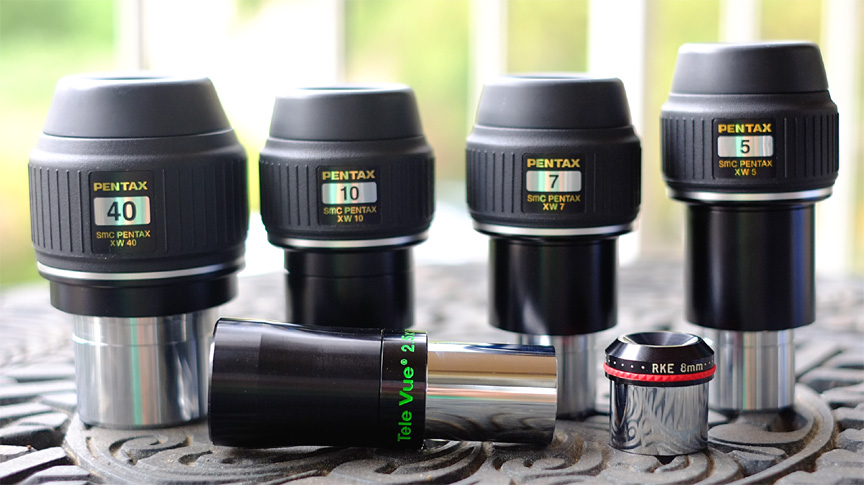
Fig 6: Eyepieces used for testing. Image Credit: Author.
The diagonal used on both telescopes was the 2" Baader BBHS Silver Mirror Star Diagonal. Eyepieces used were: a 40mm Pentax XW (700g/24.7oz; 30x in APM-152; 20x in TSA-102), a 10mm Pentax XW (390g/13.8oz; 120x in APM-152; 82x in TSA-102), a 7mm Pentax XW (390g/13.8oz; 171x in APM-152; 117x in TSA-102), a 5mm Pentax XW (395g/14.0oz; 240x in APM-152; 164x in TSA-102), an 8mm Edmund RKE (63g/2.2oz; 150x in APM-152; 102x in TSA-102), and a Tele Vue 2.5x Powermate (204g/7.2oz; w/5XW 600x in APM152; 410x in TSA-102).
Note - the weights shown for the configured telescope optical tube assemblies and accessories are based on manufacturer data. Actual weights were not measured. OPERATIONAL ASSESSMENT Field testing was conducted for several months during the summer of 2021 using both a TSA-102 f/8 refractor and an APM/Lunt-152 f/8 ED refractor. The following are the testing results and impressions of the NoH CT-20 mount from those tests. ? IMPACT RECOVERY-TIME PERFORMANCE ? The first test I performed was to take the mount into the field, lock both axes while focused on a target at a magnification of 410-600x, and then give the diagonal a good lateral jolt with my hand to simulate the telescope being bumped. I used a stopwatch to then time how long it took the view through the eyepiece to settle to being fully still once more. With the TSA-102 attached to the mount, the magnification set at 410x, and the scope fully balanced for the 5mm XW eyepiece with 2.5x Powermate attached, the view took just under 1 second to fully settle after I applied the impact to the side of the diagonal. This test was repeated multiple times on multiple occasions and remained consistent. I then repeated this same test, only this time the TSA-102 was set on the mount in an out-of-balance condition. For the out-of-balance setup I balanced the telescope with no eyepieces or amplifiers in the diagonal, then added the 5mm XW eyepiece with 2.5x Powermate. This meant that the setup was out-of-balance by being almost 1.3 pounds (21 ounces or 590 grams) heavier at the focuser. The altitude friction knob on the CT-20 was then tightened sufficiently so the telescope would stay pointed at any target I selected. Movement of the telescope to a variety of targets while in this condition remained positive and smooth.Giving the diagonal another lateral hit of the same magnitude as the previoustest showed that the time to settle remained the same at just under 1 second.This test was also repeated multiple times on multiple occasions and remained consistent. Next I mounted the larger and heavier APM-152 f/8 refractor onto the mount and repeated the same tests I did with the TSA-102, only this time the same eyepiece and amplifier combination used with the TSA-102 produced 600x in the APM-152. For this test, the settle time was also the same regardless if the telescope was balanced for the eyepiece and amplifier orleft out of balance and heavy on the focuser end by the same 1.3 pounds. Thesettle time for this setup with the heavier APM-152 however was longer at 2.5seconds (Note- the behavior of the motion while settling for both scopes wasthe same, with the larger motions from the impact only occurring at the verybeginningand then quickly setting to smaller motions for the majority of thesettletime).
After conducting these tests I felt that theresult witheither telescope was fully acceptable as the motions from theimpact were notradical, well controlled, and when the view settled to fullystill the telescoperemained precisely on-target (excepting of course for anycelestial object driftthat occurred during the settle time -- this fact wasfurther confirmed usingdaytime tests on stationary targets).
?IN-BALANCE PERFORMANCE?
When testing the CT-20's performance with thetelescopes in a properlybalanced condition, I chose to conduct these testswith the telescopes set atmore extreme magnifications so even he verysmallest issues would be readily apparent. I therefore used magnifications ofapproximately 50x per inch of aperture or 600x with the APM-152 and 410x withthe TSA-102. The eyepiece Iused for these magnifications was the 5mm XW witha Tele Vue 2.5x Powermate.This combination yielded an effect focal length ofthe eyepiece-amplifiercombination of 2mm. At these extreme magnifications observing would also bemore comfortable given the larger 70-degree AFOV ofthe XWs and their very comfortable long eye relief.
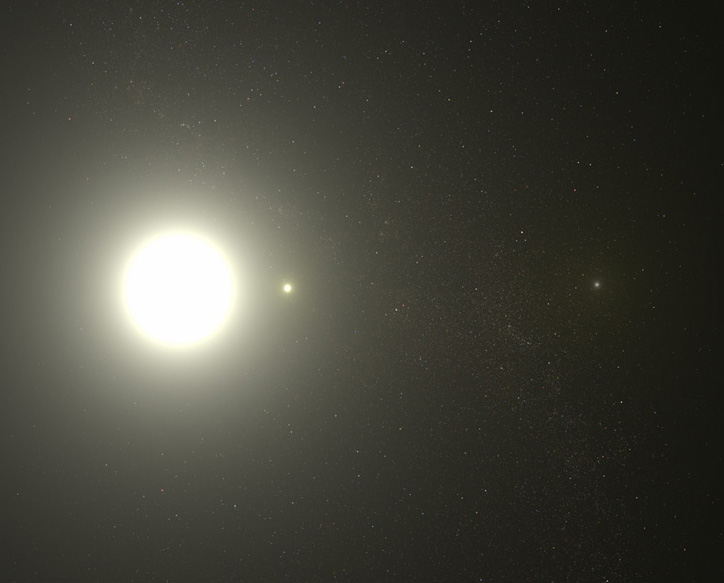
Fig 7: "Artist's View of the Polaris System". The primary component of the Polaris multiple star system is a rare yellow supergiant star. Yellow supergiants comprise less than 1% of all cataloged stars and only exist in their yellow supergiant stage for an extremely brief few thousand years of their lifetimes! Polaris is about 430 light years distant, approximately 40x as large as our Sun and almost 1300x as luminous. Credit: NASA, ESA, G. Bacon (STScI).
Since both telescopes were in-balance with these eyepieces for this test, I kept the altitude-axis and azimuth-axis friction knobs of the CT-20 mount fully loosened so the telescopes would smoothly move with virtually no friction. With the TSA-102 I observed several stars and double stars, ending the observations with a good look at the double star Polaris. While this double is not considered by many to be anything noteworthy, I find it a very intriguing observation. The reason for this has nothing to do with the aesthetics or grandeur of the view through the eyepiece, although the subtle yellow color of Polaris can be quite beautiful at high magnification, but the observation becomes very intriguing when understanding exactly what is being observed. Polaris is a yellow supergiant star, and this stage of a star's life is extremely short and therefore rarely seen in the galaxy -- yellow supergiants comprise less than 1% of all cataloged stars as the yellow supergiant stage typically lasts only a scant few thousand years. So for me, I enjoy lingering long when observing this particular double star so I can fully appreciate the rarity of this rare object I am observing.
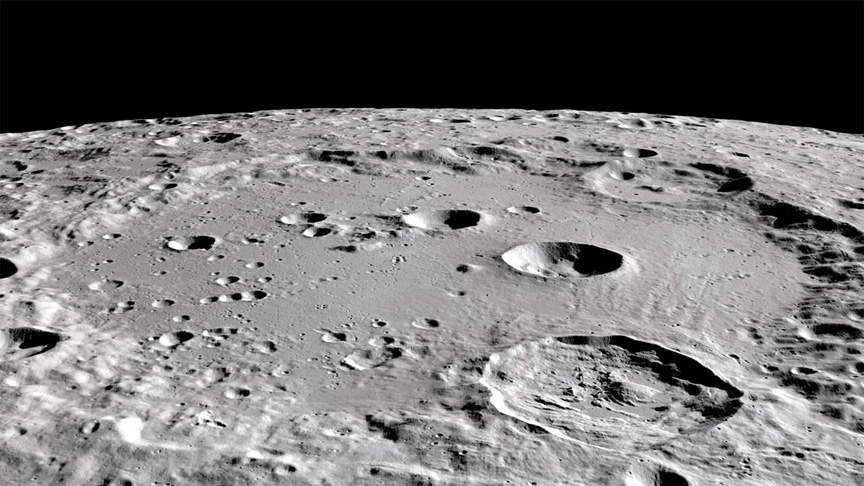
Fig 8: Lunar crater Clavius. During some of thetesting this crater was prominently placed on the Moonand was a stunning
visual at 600x in the APM-152 refractor. Image Credit: NASA/LROC.
Moving on to the APM-152 at 600x magnification, I primarily spent the observing sessions for this test on the Moon. My first impression was to be taken aback at how free and effortless it was observing the Moon at this extreme magnification with this large telescope fully balanced on the CT-20 mount. The CT-20 provided incredibly smooth and effortless movement as I moved across the surface of the Moon at magnifications high enough that I felt more like I was hiking on the Moon instead of observing it from afar! Since I more often am using my telescopes in an out-of-balance condition with the altitude-axis tension knob engaged with a good amount of friction, I am just not used to this state where there is no tension and virtually no friction on the scope. As a result, I was able to make extremely small and precise movements across the lunar surface and was also able to easily track the Moon even though at 600x as only the gentlest of force was needed to move the scope in time with the Moon as it coursed through the night sky. Needless to say I spent a very long time observing the Moon for this test and fully enjoyedevery moment of it. In-balance performance of the CT-20 using either theTSA-102 or the APM-152 at high magnification I felt was nothing short ofspectacular!
? OUT-OF-BALANCE PERFORMANCE ?
While many observers judiciously re-balance their telescopes when they switch between different accessories such as eyepieces, I tend to be lazy in this respect and instead depend on adding tension on the altitude-axis so that the telescope stays where I point it even though sometimes in an extreme out-of-balance state. Of course, re-balancing the telescope as you change accessories is the best approach, but for my personal preferences I needed to ensure that a mount can still perform smoothly and effectively and without being choppy in its movements even when significant tension is applied to the altitude-axis tension knob as I tend to not re-balance.
For a typical observing session I will use a small cadre of eyepieces, usually one 2-inch eyepiece and then several 1.25-inch eyepieces in both wide-field 70-degree apparent field of views (AFOV) and smaller 50-degree class AFOVs. In my case, on a typical general observing session I usually take a 40mm XW, 10mm XW, 7mm XW, 5mm XW, then several small format 50-degree AFOV eyepieces such as Edmund RKEs or Takahashi LEs. More often I will take out the Edmund RKEs as I prefer how single coated optics render planetary details and double star colors. With these eyepieces, their weights range from 25 ounces (700 grams) for the 40mm XW at the heaviest and then as light at about 2.2 ounces (62 grams). So given that range of eyepieces, the weights will vary from 2.2 ounces (62 grams) to 24.7 ounces (700 grams). If one then balances the scope for the weight in the middle of that range, or 13.5 ounces (383 grams), then the scope will only be out-of-balance by a maximum of +/- 11.5 ounces (326 grams), depending on which eyepiece is chosen. This is in my opinion the optimum approach if one does not intend to re-balance the telescope with every eyepiece change.
For my testing however, I decided to stress the mount more and therefore balanced the telescope with either the lightest or heaviest eyepiece to see how it would handle more of a maximum out-of-balance situation, taking note if movement remains smooth, if there was any greater initial force needed to start movement, and if there was any backlash when movement was stopped. The reason I decided to accomplish this test using the maximum weight differential of the eyepieces I brought into the field was again because I tend to be lazy and want to start observing as soon as possible. That being the case it is easier to simply balance the telescope for the first eyepiece I will be using, which will most times be the larger and heavier 2-inch eyepiece that provides the widest true field of view (TFOV).
When a telescope is out-of-balance on its mount I find that backlash is typically the most common issue one encounters. This issue, if it occurs, generally will affect only the altitude-axis. What you will see in the eyepiece when there is backlash is that when you move the telescope to center a celestial object in the field, when you stop the movement the telescope will then settle in one direction or the other depending on if the eyepiece-end of the telescope is lighter or heavier than the balanced state. If the eyepiece-end is heavier, then when moving the telescope's eyepiece end upward to view an object that is lower in altitude, once you release the telescope gravity will cause the heavier end of the telescope to sometimes move downward some before it comes to a full stop. If the eyepiece-end of the telescope is lighter than the balanced state, then the situation will be reversed.
With the TSA-102 balanced for the 40mm XW eyepiece in the CT-20 mount, I then replaced that eyepiece with an 8mm RKE so the telescope was now lighter at the eyepiece-end and out-of-balance by 1.4 pounds (22.5 ounces or 638 grams). I then had to apply a significant amount of force on the altitude-axis knob of the CT-20 to keep the telescope steady when moved in this severeout-of-balance situation. Movement of the telescope from horizon to zenith andall around the azimuth-axis remained smooth even though the altitude frictionknob was tightly set. Initiating movement of the telescope from the restingposition also showed no need for any extra force being needed to get themovement started. Finally, with the eyepiece-end of the telescope beingout-of-balance by the significant 1.4 pounds (22.5 ounces or 638 grams), asmall amount of backlash was then detected when raising the eyepiece-end of thetelescope to point the telescope at a target lower on the horizon. Lookingthrough the 8mm RKE eyepiece (102x) I measured the backlash that occurred to beapproximately 1.8 arcminutes. I considered this excellent performance for anout-of-balance condition this large as even in the smaller AFOV of the RKEeyepiece (approx. 50-degrees), at 102x in the TSA-102 the AFOV of thiseyepiece showed slightly less than 1/2 degree or 30 arcminutes. Therefore abacklash movement of 1.8 arcminutes compared to an AFOV of almost 30arcminutes meant that when I centered the object in the AFOV, the backlashshift was only about 1/17th of the size of the AFOV; so very minimal.
Repeating the same test using the larger and heavier APM-152 refractor showed no difference in outcomes and the backlash shift when the scope was out-of-balance by 1.4 pounds (22.5 ounces or 638 grams) at the eyepiece-end was the same 1.8 arcminutes. However, in the APM-152 the 8mm RKE produced 150x magnification which in turn meant the true field of view it displayed was a smaller 1/3 of a degree or 20 arcminutes. The 1.8 arcminute backlash therefore showed as being more significant and 1/11th of the AFOV, which for my observing habit and preferences I judged to still be quite acceptable.
Having the CT-20 mount handle an out-of-balance condition of 1.4 pounds (22.5 ounces or 638 grams) at the eyepiece end of the telescope is in my estimation significantly unbalanced. So I decided to also examine at what out-of-balance weights no backlash occurred. To do this I balanced the scope without any eyepieces in the diagonal then proceeded to add eyepieces of different weights noting when I first could see noticeable backlash. Using this approach I determined that noticeable backlash did not occur until the eyepiece weight exceeded 10.6 ounces (301 grams). This meant that if I balanced the telescope at the mid-point weight of the eyepieces I took into the field, instead of balancing for the heaviest (40 XW) or lightest (8mm RKE) that I would have likely not encountered any backlash as balancing at the mid-point of those eyepieces would have resulted in a maximum out-of-balance condition of only 11.5 ounces (326 grams), very close to the 10.6 ounces (301 grams) where no backlash was observed in testing.
4. SUMMARY IMPRESSIONS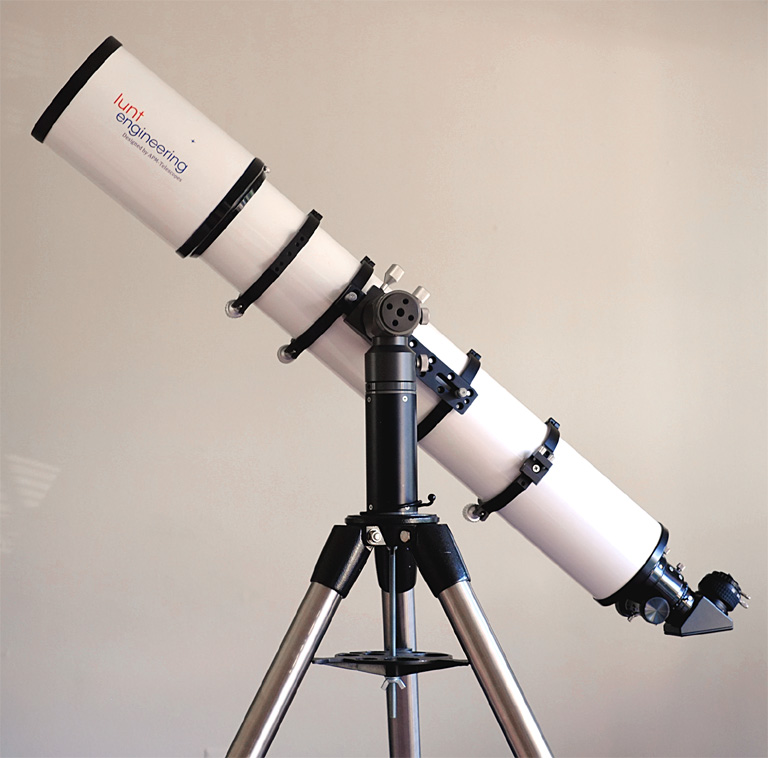
Fig 9: APM 152-ED f/8 refractor with the NoH CT-20 mount head and 7" Extension Pier
on a Celestron GC-5 Tripod. Image Credit: Author.
After several weeks of field use of the NoH CT-20 mount for general astronomical observing with both my TSA-102 and APM-152 refractors, I found the operation and use of this mount to be highly intuitive in the field. The axis friction knobs are conveniently located and are tactile-distinctive from the saddle plate knobs that hold the telescope on the mount, so there was never any question in the dark as to which knob-type I was operating. Operation of the mount was also smooth and precise throughout the testing and general field observing sessions. At no time did I ever find that the CT-20 mount was anything but superlatively capable to handle even my large 6-inch f/8 refractor.
I also found it quite satisfying that the mount maintained very smooth and precise pointing and motions even when the telescope attached to it was kept in a very significant out-of-balance state, showing no backlash when out-of-balance by almost seven-tenths of a pound at the eyepiece end of the telescope (10.6 ounces or 301 grams), and acceptable backlash even when that out-of-balance condition was more than twice as large at a full 1.4 pounds (22.5 ounces or 638 grams). With the CT-20 I was therefore able toeffortlessly focus on my observing without the mount hindering that pursuit inany way. I actually felt the CT-20 facilitated my observing by providing sucha steady and precise visual platform for my telescopes. And when I used themount with a telescope balanced for magnifications as high as 600x, Idiscovered a world new-to-me as the motions were so buttery-smooth and precisethat the telescope required nothing more than the gentlest of touches to pointit at new objectsor even track objects at these extreme magnifications. Myhigh power lunar observing when using the NoH CT-20 actually provided me witha more satisfying and memorable time with the Moon than I've had in manyyears! Given that the CT-20 Alt-Az mount also has the ability to hold twotelescopes side-by-side, easily handles larger weighty telescopes, and willsoon have an ecoder option for those needing automated support for findingcelestial objects, I would characterize the CT-20 as a nice example of a verygood and fully capable top-tier alt-az mount that one can grow into as theyacquire larger refrative telescopes. Overall I found the NoH CT-20 anoutstanding alt-az mount and actually the first alt-az mount I have usedwithout slow motion controls that felt does not need those type of controls.Very highly recommend!
About the AuthorWilliam "Bill" Paolini has been actively involved in optics and amateur astronomy for more than 50 years, is author of the desk reference on astronomical eyepieces: Choosing and Using Astronomical Eyepieces which is part of the Patrick Moore Practical Astronomy Series published by Springer of New York, has published numerous product reviews on major online amateur astronomy boards, and has worked as a tour guide volunteer for the United States Naval Observatory's historic 1873 26" and 12" Alvan Graham Clark refractors.
Bill has been observing asan amateur astronomer since the mid-1960's, grinding mirrors for homemade Newtonian telescopes during the 1970's and eventually owning, using, and testing over 400 eyepieces in a wide variety of telescopes includingAchromatic Refractive, Apochromatic Refractive, Newtonian,Maksutov-Cassegrain,and Schmidt-Cassegrain optical designs. Today he enjoyslunar, planetary, and doubles star observing from his suburban home 15 mileswest of Washington, D.C. and at a darker site in rural Virginia about 45minutes west of his home where he focuses on open cluster, globular cluster,nebula, supernova remnant, and galaxy observing.
***
This article isplaced into the Public Domain by William Paolini 2021; Author images c WilliamPaolini 2021.
For permissionto use author images separate from the fullarticle, submit your request to wapaolini@hotmail.com.

